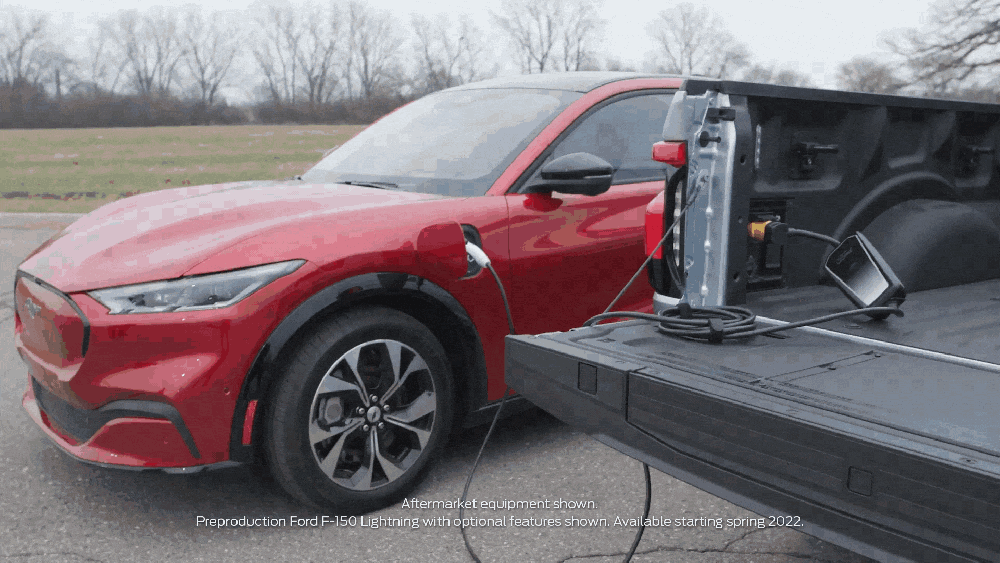As of right now, Ford Motor Company has 200,000 reservations lined up for the Lightning, and those drivers will have the additional benefit of being able to use their Lightning to charge any other EV on the road.
At the end of a one and a half hour tour of high-validation units at the Rouge Electric Vehicle Center in Dearborn, Michigan, Ford’s General Manager of Battery Electric Vehicles, Darren Palmer, unveiled a previously undisclosed feature of the Lightning – an AC charging output of up to 7.6kW (32A at 240V).
This output is the first of its kind in the world and is sure to excite not only future Lightning owners, but other electric vehicle owners as well. On the Ioniq 5, Hyundai was able to charge another car at Level 1 speeds with its 2kW output port.
Imagine a scenario in which you are driving your Lightning to run some errands, and you notice that there is an electric vehicle on the side of the road that is clearly out of juice. In this situation, and innumerable others, the driver of a Lightning will now have the capability to help a passerby in need with their 7.6kW AC charging output, as shown below:


How quickly can a Lightning charge another EV? According to Hannah Ooms, Ford’s Electric Vehicle Communications Manager:
It’s estimated to add an average range of 20 miles per charging hour to a Mustang Mach-E with extended range and rear wheel drive, up to 13 miles of charge per hour on an F-150 Lightning, and an average range of 10 miles per charging hour to an E-Transit low-roof cargo van.
Smaller, highly efficient EVs will grab even more range in an hour and will likely require less time to get vehicles on their way home or to the nearest terrestrial charging station.
Not only can the F-150 Lightning charge any other electric vehicle in the world, but it also has the capability to power a home or a work site for days as we saw at the launch of the F-150 Lightning.
Electrek’s Take:
You love to see it – an EV that charges other EVs is an important move for the future of transportation. And when we heard that the F-150 Lightning could power a house, we knew that it could charge a car – the news isn’t a huge surprise.
We’re slightly disappointed that it can’t DC charge via CCS combo at higher speeds like 50kW, which would get a typical EV back on the road in a matter of minutes. While the F-150 can certainly put that much power to the motors and wheels and indeed 10x that, it is possible that the batteries aren’t rated for that kind of discharge while the vehicle is at a standstill. More likely, though, the vehicle isn’t built for discharging at 50kW DC.
In fact, as most EVs can regenerate at over 50kW, you might have more luck just towing the out-of-battery EV a few miles down the road while it regenerates electricity at the same time that it gets closer to its destination.
Either way, this is great news for the world of electric vehicles, and an impressive feat for Ford.
FTC: We use income earning auto affiliate links. More.
Subscribe to Electrek on YouTube for exclusive videos and subscribe to the podcast.
